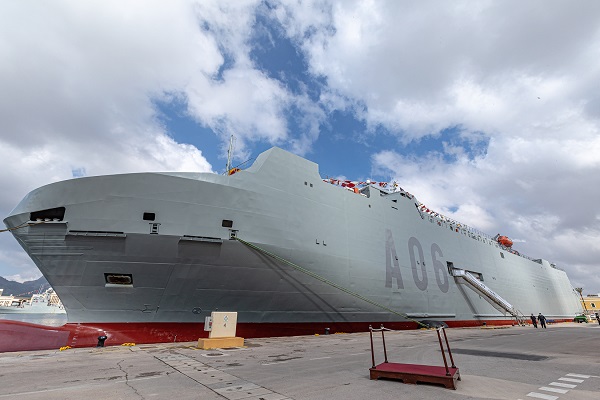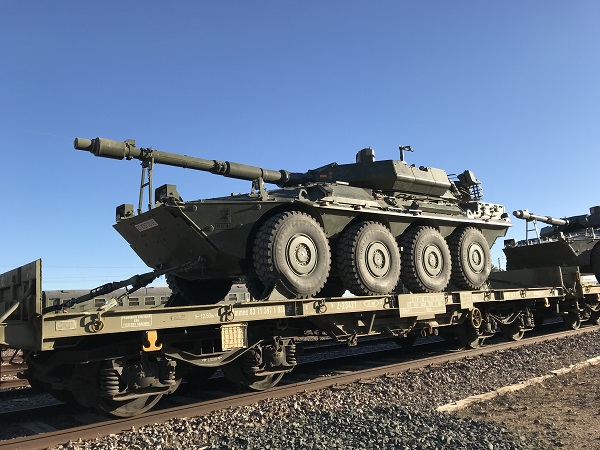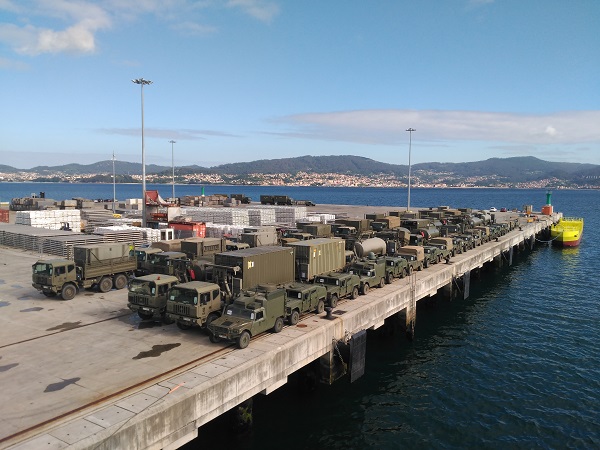- Texto no traducido
- Texto no traducido
- New transport model
New transport model
jueves 28 de octubre de 2021
Texto no traducido 103
It is an evolution of the Army's Integrated Logistics Management System, more visual and that allows users to have a global idea of the movements and the budget used.
Every year, the Army carries out the transportation of people, materials and other elements to carry out instructional and training exercises, parades, exhibitions and various activities. For this purpose, it uses its road transport capacities, civil - through framework agreements, contracts or agreements- and those provided by the Army and Navy ships, the Air Force's post service, railroads and the Army's air resources. To control all these movements, the Integrated Logistics Management System of the Army, better known as SIGLE (Spanish abbreviation), is used.

Plane
The new tool is more visual and the commanders who use it will be able to access, on the same screen, all the trips that are going to be made, the expense they have made - on the date they consult it - or the budget that they still have available. Thus, the head of the Transport Area of the Logistics Management Sub-Directorate, Lieutenant Colonel Álvarez, affirms: «In the current transport model visibility reduces, as changes take place, because what was originally contracted, taking into account the needs, does not coincide with what is subsequently executed». For this reason, a new model is being worked on to improve these aspects. «With it we try to have visibility in real time according to what is being carried out,» says the lieutenant colonel.
The Army Logistics Support Command (MALE - Spanish abbreviation) is in charge of carrying it out. It is a modernization of the current one and will be implemented in several phases. To date, the entire theoretical framework has been developed, as well as the acquisition of new software and a new route optimizer, with which it is expected that real tests will begin to be carried out in November to see its effectiveness.

Ship Ysabel
The main objective of this update is to provide an efficient and effective response, depending on the situation at any given time, and to increase automation in the management of the needs of ground personnel through the optimal use of all capabilities -civilian, military or mixed-. Thus, the needs will be classified as scheduled -included in the Annual Land and Maritime Transport Plans-, non-scheduled -they cannot be planned within the established deadlines-, urgent - it is necessary to apply specific non-standardized solutions- and external parcel delivery -it is carried out using external services-.
Thus, the new transport model will continue to be managed through SIGLE (Spanish abbreviation) and all the members in charge of the operation of the transport system will have full visibility of the actions to be carried out because they are programmed - they will be carried out according to what is indicated in the annual Logistics Activities Program of the Logistics Functions Directorate of MALE (Spanish abbreviation) -, of those that are not programmed, but have to be executed due to other needs, of the urgent activities and those of external parcel delivery.
In addition, they will have an apparatus that will allow them to check the expense they have had so far and the credit they have available for new trips. It will also facilitate the documentary management of shipments/packages, monitoring and control, communication with external suppliers and the management and resolution of incidents. As the units confirm their travel needs, the tool will automatically generate all the transport orders to the corresponding means.

Railway
The improvements in the current transport system entail the centralization in the MALE (Spanish abbreviation) of the contractual management of transport credits and the establishment of the Means Visibility module, where it will be possible to know the organic displacement capacities. This will help to determine the transfers that can be carried out with the Army's own means - transport of heavy vehicles (gondola transport) and personnel (buses) -, leaving only civilian means for those that cannot be covered with those mentioned above .
With this, the commanders will have control of the evolution of their budgets and their availability. Thus, it will allow them to have a global vision that will help them make better distribution decisions and carry out a more efficient, automatic and adequate management of the means of transport that they use in all their activities.

Maritime
MAIN ADVANTAGES of the new transport model
More visual and automated application.
Reduced workload of personnel involved in the transportation chain.
Transportation efficiency. Currently it is done manually and will be done by the program itself.
Better and more adequate use of military means.
Texto no traducido
- Araba Álava |
- Albacete |
- Alicante |
- Almería |
- Asturias |
- Ávila |
- Badajoz |
- Barcelona |
- Burgos |
- Cáceres |
- Cádiz |
- Cantabria |
- Castellón |
- Ceuta |
- Ciudad Real |
- Córdoba |
- A Coruña |
- Cuenca |
- Girona |
- Granada |
- Guadalajara |
- Gipuzkoa |
- Huelva |
- Huesca |
- Islas Baleares |
- Jaén |
- León |
- Lleida |
- Lugo |
- Madrid |
- Málaga |
- Melilla |
- Murcia |
- Navarra |
- Ourense |
- Palencia |
- Las Palmas |
- Pontevedra |
- La Rioja |
- Salamanca |
- Segovia |
- Sevilla |
- Soria |
- Tarragona |
- Santa Cruz de Tenerife |
- Teruel |
- Toledo |
- Valencia |
- Valladolid |
- Bizkaia |
- Zamora |
- Zaragoza



